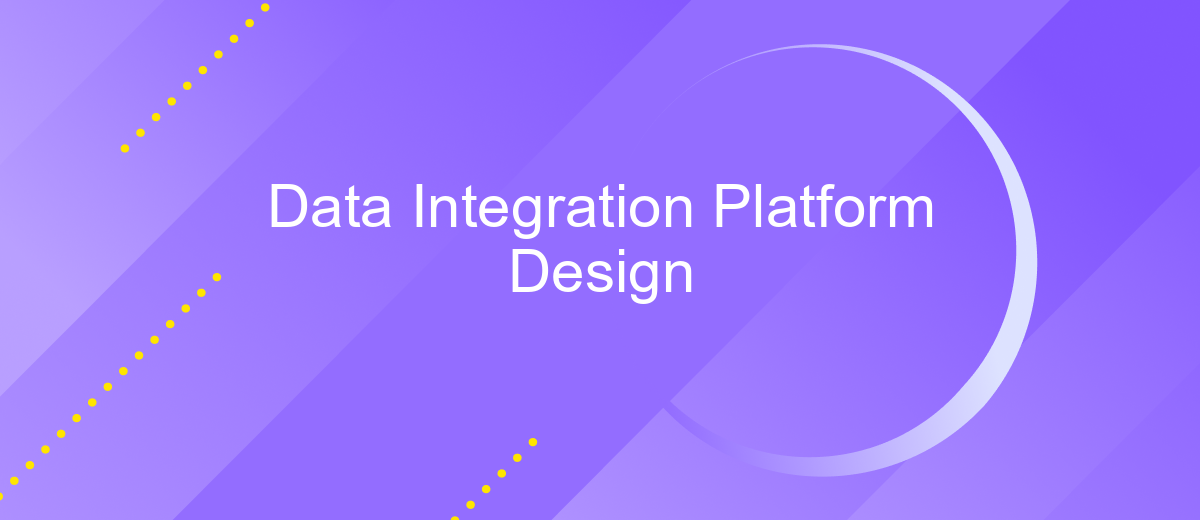Data Integration Platform Design
Designing a Data Integration Platform is crucial for modern enterprises seeking to harness the power of their data. This process involves creating a seamless system that consolidates disparate data sources, ensuring efficient data flow and accessibility. By integrating various data streams, businesses can achieve enhanced analytics, improved decision-making, and a competitive edge in their respective industries.
Introduction
In today's data-driven world, the ability to integrate various data sources seamlessly is crucial for businesses looking to gain comprehensive insights and make informed decisions. A well-designed Data Integration Platform (DIP) enables organizations to consolidate data from disparate systems, ensuring data consistency and accessibility.
- Streamlined data flow across multiple sources
- Enhanced data quality and accuracy
- Real-time data processing and analytics
- Scalability to accommodate growing data volumes
One such solution is ApiX-Drive, a service that simplifies the integration process by providing a user-friendly interface and robust connectivity options. ApiX-Drive allows businesses to automate data transfer between applications, reducing manual efforts and minimizing errors. By leveraging ApiX-Drive, organizations can enhance their data integration capabilities, leading to more efficient operations and better decision-making.
Architecture

The architecture of a Data Integration Platform is designed to ensure seamless data flow between disparate systems. It typically consists of several layers, including the data ingestion layer, the data processing layer, and the data storage layer. The data ingestion layer is responsible for collecting data from various sources such as databases, APIs, and flat files. The data processing layer then transforms and cleanses the data to ensure consistency and accuracy. Finally, the data storage layer stores the processed data in a centralized repository, making it accessible for analysis and reporting.
To facilitate the integration process, services like ApiX-Drive can be utilized. ApiX-Drive provides a user-friendly interface for setting up and managing data integrations without the need for extensive coding. It supports a wide range of data sources and destinations, allowing for flexible and scalable integration solutions. By leveraging such services, organizations can significantly reduce the time and effort required to integrate their data systems, ensuring that their data integration platform remains efficient and effective.
Data Integration Patterns

Data integration patterns are essential for designing robust and scalable systems that seamlessly connect disparate data sources. These patterns provide standardized approaches for data movement, transformation, and synchronization, ensuring consistency and reliability across platforms.
Common data integration patterns include:
- ETL (Extract, Transform, Load): This pattern involves extracting data from various sources, transforming it into a suitable format, and loading it into a target database or data warehouse.
- Data Replication: This pattern ensures that data is consistently copied and synchronized between multiple databases or systems in real-time or near-real-time.
- Data Virtualization: This pattern allows users to access and query data from multiple sources without physically moving the data, providing a unified view.
- API Integration: This pattern uses APIs to connect and integrate different systems, enabling real-time data exchange and automation. Tools like ApiX-Drive simplify API integration by offering pre-built connectors and an intuitive interface for setting up integrations.
Choosing the right data integration pattern depends on specific business requirements, data volume, latency needs, and existing infrastructure. By leveraging these patterns, organizations can achieve efficient data flow, improved data quality, and enhanced decision-making capabilities.
Design Considerations

When designing a Data Integration Platform, several key considerations must be taken into account to ensure the system is robust, scalable, and efficient. The architecture should be flexible enough to accommodate various data sources and formats, as well as be capable of handling both real-time and batch processing.
Security is paramount in data integration. It is essential to implement strong authentication and authorization mechanisms to protect sensitive data. Additionally, data encryption during both transit and storage should be a standard practice to safeguard against unauthorized access.
- Scalability: Ensure the platform can scale horizontally and vertically to handle increasing data volumes.
- Data Quality: Implement validation and cleansing processes to maintain high data quality.
- Monitoring: Set up comprehensive monitoring and alerting systems to quickly identify and resolve issues.
- Interoperability: Use standard protocols and formats to ensure compatibility with various data sources and systems.
For seamless integration, consider using services like ApiX-Drive, which facilitate the connection between different applications and automate data workflows. This can significantly reduce development time and ensure that your platform remains adaptable to future needs.


Conclusion
In conclusion, designing a robust Data Integration Platform is crucial for ensuring seamless data flow and enhanced decision-making capabilities within an organization. The architecture should prioritize scalability, flexibility, and security to adapt to evolving data sources and business needs. Effective integration not only streamlines operations but also provides a unified view of data, which is essential for insightful analytics and strategic planning.
Utilizing tools like ApiX-Drive can significantly simplify the integration process by offering a user-friendly interface and a wide range of pre-built connectors. This reduces the need for extensive coding and accelerates deployment times. By leveraging such services, organizations can focus more on deriving value from their data rather than getting bogged down by the complexities of integration. Ultimately, a well-designed Data Integration Platform serves as the backbone for a data-driven enterprise, fostering innovation and competitive advantage.
FAQ
What is a Data Integration Platform?
Why is data integration important for businesses?
How can I automate data integration processes?
What are the key features to look for in a Data Integration Platform?
How do I ensure data accuracy and consistency in an integrated system?
Time is the most valuable resource for business today. Almost half of it is wasted on routine tasks. Your employees are constantly forced to perform monotonous tasks that are difficult to classify as important and specialized. You can leave everything as it is by hiring additional employees, or you can automate most of the business processes using the ApiX-Drive online connector to get rid of unnecessary time and money expenses once and for all. The choice is yours!

